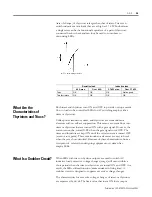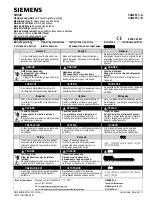
Publication 700-AT001A-EN-E June 2002
Considerations When Designing SSR Control Systems
2-17
Forward and Reverse Operation of a Three-phase Motor
Single SSRs in Combination
Make sure that signals input into the SSR Units are proper if the SSR
Units are applied to the forward and reverse operation of a
three-phase motor. If SW1 and SW2 as shown in the following circuit
diagram are switched over simultaneously, a phase short-circuit will
result on the load side, which may damage the output elements of the
SSR Units. This is because the SSR has a triac as an output element
that is turned ON until the load current becomes zero regardless of
the absence of input signals into the SSR.
Therefore, make sure that there is a time lag of 30 milliseconds or
more to switch over SW1 and SW2.
The SSR may be damaged due to phase short-circuiting if the SSR
malfunctions with noise in the input circuit of the SSR. To protect the
SSR from phase short-circuiting damage, the protective resistance R
may be inserted into the circuit.
The value of the protective resistance R must be determined according
to the withstanding inrush current of the SSR. For example, the
700-SH25G_ withstands an inrush current of 220 A. The value of the
protective resistance R is obtained from the following.
R > 220 V x
/200A = 1.4
Ω
Considering the circuit current and weld time, insert the protective
resistance into the side that reduces the current consumption.
Obtain the consumption power of the resistance from the following.
P = I
2
R x Safety factor
(I = Load current, R = Protective resistance, Safety factor = 3 to 5)
















































